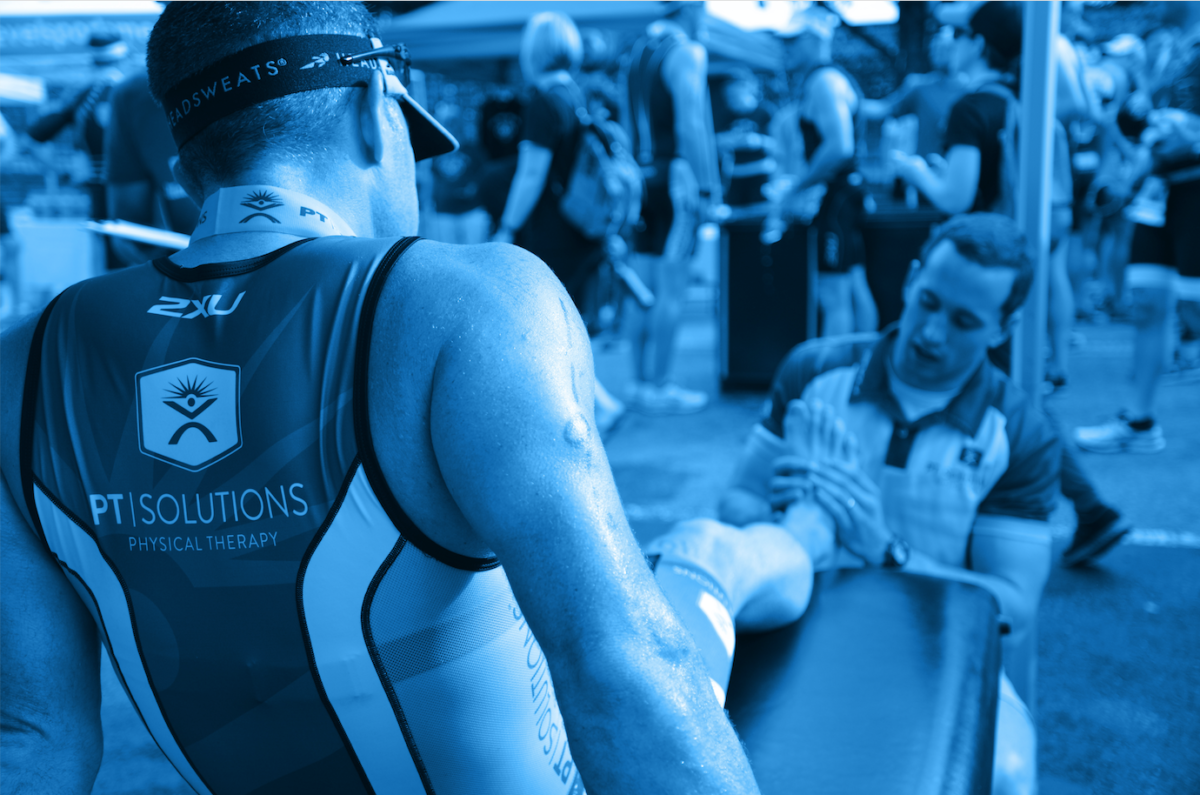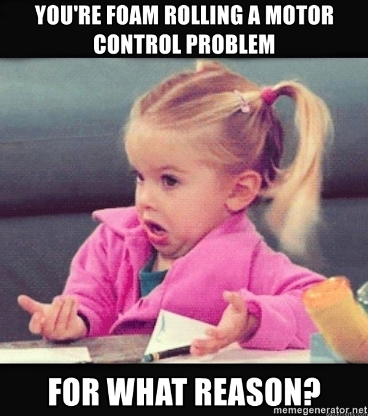How Do You Improve Motor Control?
Read Time: 9-11 minutes

“The test of first rate intelligence is the ability to hold two opposed ideas in the mind at the same time, and still retain the ability to function.”
– F. Scott Fitzgerald
I know what you are thinking, I barely satisfied your appetite for knowledge on motor control in the last post. Well brace yourselves and prepare to be amazed…seriously. As a recap of my last exhilarating post, we dug into the messy, generic topic that is motor control. We provided “definitions” and common ways to describe clinical findings. I left you with a cliffhanger and promised to cover the best approaches to treat motor control impairments. Most of this information comes from two papers published in the aforementioned June Issue of JOSPT .
In this post, I will focus on common frameworks used for approaching motor control impairments. When looking at the various schools of thought, there are four primary options: Movement System Impairments (MSI), Mechanical Diagnosis and Therapy (MDT), Motor Control Training (MTC), and the Integrated Systems Model (ISM). So, without further ado, let’s jump in.
Movement System Impairments
MSI operates under the assumption that the main causes of movement impairments are repeated movements and sustained postures we assume throughout the day. These continuous demands result in associated tissue changes and lead to movement impairments. Essentially, the tissue adaptations create preferred movements patterns as they facilitate or resist specific movements.[1] This is where aberrant movement comes into play.
Aberrant movement comes in many varieties and the focus differs between studies. For example, motion capture studies have demonstrated patients with LBP initiate lumbar movement sooner than patients without LBP when lifting the arm, flexing the knee, or rotating the hip.[2] In addition, patients with LBP have difficulty dissociating lumbar movements from the pelvis and thoracic spine.[3] Furthermore, correction of the aberrant movement pattern may lead to a reduction in symptoms. So how is this correction accomplished?
The therapist provides specific exercises designed to correct the identified impaired movement patterns. Initially the goal is to facilitate the patient controlling a static lumbar position while they actively move their extremities. The key is keeping the movements functional and related to the patient’s specific activity goals. Studies have shown patients adhere better to training programs incorporating functional activities than strict strength and flexibility exercises.[4] increasing adherence to a plan of care is vital for optimal outcomes…and our sanity as providers.
Mechanical Diagnosis and Therapy
Proponents of MDT would likely scoff at attempting to outline the underlying concepts, examination, and treatment utilizing this framework in a single paragraph. There is a significant amount of research on this technique (all 4 frameworks but especially MDT) and I encourage you to read it. Proponents of MDT would also likely scoff at the notion that it is a framework designed for motor control impairments, as that is simply a piece of the LBP puzzle. However, while MDT covers more than motor control treatment, it does have a large component dedicated to postural correction and movement control for the prevention of and recovery from LBP.
As a 30,000-foot summary, when using a MDT approach, patients perform their exercises in a movement pattern and direction that is pain-relieving and preferred. Overtime, they develop new postural habits that minimizes pain and the return of symptoms. Once again, this is a gross simplification and more detail can be had with further reading. The studies that have assessed outcomes with MDT have shown positive results.[5, 6] Patients who demonstrate a directional preference, pain centralization with repeated movement, or both typically achieve better outcomes when prescribed exercises that match their directional preference – in addition to appropriate posture modifications – compared with non-matched treatments.
Motor Control Training
Ah, finally a straightforward name for this topic, Motor Control Training. MCT operates under the basic premise that inputs from the spine or surrounding tissue are the primary drivers for the development and maintenance of motor control impairments. Suboptimal loading, potentially as a result of pain or a fear of inducing pain, leads to changes in positioning, movements, and muscle activation. All of these alterations are specific to the individual, rather than a predefined set of movement patterns. When developing a plan of care to treat identified position or movement impairments, four biomechanical principles are utilized.
- Appropriate lumbopelvic control is absolutely necessary for function. [3, 7]
- People should have sufficient ability to achieve and sustain a “neutral” lumbar spine in static positions. [8, 9]
- While movement at the trunk is necessary for functional activity, extremity movement should initiate first (most of the time). [2]
- Joints and muscles attached to the pelvis require adequate mobility and flexibility to sustained spinal control during extremity movement (caveat: “adequate” is not a defined number of degrees like our school text state, however there is not a defined/objective measure at all here).[10]
So how do we identify if any of these four areas need addressing? MCT advocates for assessment of four primary areas: trunk muscle control (assessment of muscle contraction), posture and movement, functional tasks, and broader dimensions of LBP (e.g. psychosocial). While some may read those four categories and think “Duh,” the key is the specificity and personalized approach of assessment and intervention. Rather than using a cookie-cutter approach and a very general view of LBP, MCT advocates for breaking down the impaired movement patterns and designing exercises specifically geared to treat them.
Integrated Systems Model
Last, but not least, we have ISM. This one will be shorter as it is an “evidence informed” clinical approach rather than evidence based.
Glad you asked. Basically, evidence-informed means it is founded in research, but randomized control trials have not been conducted yet. There is a foundational understanding of the concept, but it has not been rigorously tested against controls and with limited bias.
ISM takes into account the impact of each system and body region on the whole person. It has a goal of combining clinical knowledge from various fields of science and clinical practice to provide a comprehensive, non-surgical approach. Other models are primarily focused on movement and static postures while ISM takes into account potential past trauma that may not be resolved, high load demands, patient beliefs surrounding their symptoms that may serve as barriers, and lifestyle habits (e.g. diet and sleep). While this is a comprehensive viewpoint, it poses significant challenges when attempting to “validate” it through randomized control trials as there are too many variables. Even the treatment approach is broad and creates difficultly in narrowing down specific research questions.
The three main categories of interventions are education, manual therapy, and motor control, and movement training. The education primarily focuses on negative beliefs and the understanding of pain. The manual therapy prioritizes “hypomobile” areas. The motor control training emphasizes improving recruitment strategies for both static posture and functional movement. Lastly, the movement training is mainly targeting strength and endurance.
Compare and contrast
Recap time. There are some similarities and differences between all four theories. On the similarity side we have the following (I bolded the three I am most concerned about in designing a plan of care):
- Perform a detailed assessment and develop an individualized treatment plan
- Utilize clinical reasoning with multiple components
- Operate under the assumption that tissue loading contributes to symptom maintenance
- One of the goals is to optimize tissue loading
- Attempt to correct of posture/alignment
- Provide progressive instruction on limiting lumbar motions while correctly movement at the hips during function movements
- Heavy focus on the patient-therapist relationship
They differ in the following manners:
- Difference in reliability with subgrouping (some more effective at predicting outcomes than others)
- Differing primary focus
- MDT utilizes standard groupings and matched treatments based on specific, repeated movements
- MSI, MCT, and ISM stress correcting alignment and movement patterns, although the clinical frameworks differ
- Differing initial management
- MSI instructs the patient on alignment and movement correction
- MDT teaches exercises based on mechanical subgroups
- MCT modifies alignment and movement through enhanced/reduced muscle activity
- ISM aims to “release and align” (manual therapy followed by motor control exercises)
- Varying levels of evidence and support between the groups
The winner is…
So, which one is best? I’ll leave that to you to decide. Ultimately, they each have pros and cons and the evidence does not create a clear picture. I would like to highlight numbers 1, 2, and 7 from the similarities list as I rank these among the most important features of any plan of care. There are clearly many different ways to assess and treat impairments. Two of the keys are a personalized approach and a solid therapeutic alliance between the clinician and patients. While many of these factors consider biomechanical features, many other psychosocial factors will need to be considered to provide a complete plan of care. The tricky part is determining which examination measures and interventions are best.
My encouragement for each of you is to continue critically appraising the literature in these areas, practice and refine your clinical assessments and treatments, and ensure the approaches are patient-centric. Lastly, be open to modifying your approach when appropriate. The danger of adopting a specific “school of thought” like MSI, MDT, MCT, or ISM is they can create a tunnel-vision approach that fuels theory-induced blindness, confirmation bias, and sunk-cost fallacies which can significantly hamper our outcomes and thus negatively impact our patients. They all have valuable components that can assist with treating motor control impairments, but my recommendation is to take those pieces to develop a personalized plan of care, rather than fitting a patient to a pre-determined treatment approach.
- Hides, J.A., et al., Convergence and Divergence of Exercise-Based Approaches That Incorporate Motor Control for the Management of Low Back Pain. J Orthop Sports Phys Ther, 2019. 49(6): p. 437-452.
- Scholtes, S.A., S.P. Gombatto, and L.R. Van Dillen, Differences in lumbopelvic motion between people with and people without low back pain during two lower limb movement tests. Clin Biomech (Bristol, Avon), 2009. 24(1): p. 7-12.
- van den Hoorn, W., et al., Mechanical coupling between transverse plane pelvis and thorax rotations during gait is higher in people with low back pain. J Biomech, 2012. 45(2): p. 342-7.
- Van Dillen, L.R., et al., Efficacy of classification-specific treatment and adherence on outcomes in people with chronic low back pain. A one-year follow-up, prospective, randomized, controlled clinical trial. Man Ther, 2016. 24: p. 52-64.
- Surkitt, L.D., et al., Efficacy of directional preference management for low back pain: a systematic review. Phys Ther, 2012. 92(5): p. 652-65.
- May, S., N. Runge, and A. Aina, Centralization and directional preference: An updated systematic review with synthesis of previous evidence. Musculoskelet Sci Pract, 2018. 38: p. 53-62.
- Mok, N.W., S.G. Brauer, and P.W. Hodges, Changes in lumbar movement in people with low back pain are related to compromised balance. Spine (Phila Pa 1976), 2011. 36(1): p. E45-52.
- Mitchell, T., et al., Regional differences in lumbar spinal posture and the influence of low back pain. BMC Musculoskelet Disord, 2008. 9: p. 152.
- Claus, A.P., et al., Different ways to balance the spine in sitting: Muscle activity in specific postures differs between individuals with and without a history of back pain in sitting. Clin Biomech (Bristol, Avon), 2018. 52: p. 25-32.
- Van Dillen, L.R., et al., Hip rotation range of motion in people with and without low back pain who participate in rotation-related sports. Phys Ther Sport, 2008. 9(2): p. 72-81.
ABOUT THE AUTHOR



